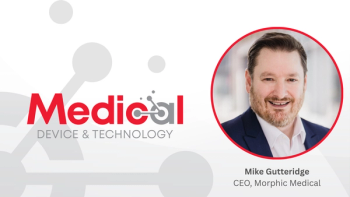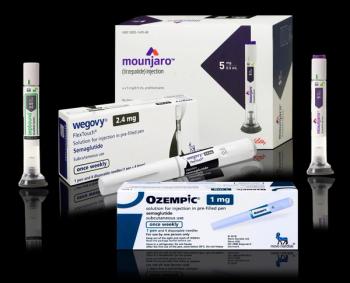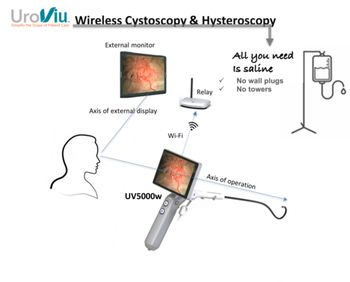
Why the new U.S. interoperability rules matter during the COVID-19 pandemic
The new interoperability rules could not have come at a better time.
Saying March has been a busy month for healthcare is an understatement. For the first time in 58 years, the HIMSS Global Health Conference & Exhibition - set to be held March 9-13 - was cancelled. Then, the Office of the National Coordinator for Health Information Technology and the Centers for Medicare & Medicaid Services issued final rules on interoperability and information blocking with the
The new interoperability rules could not have come at a better time as patients, providers and public health officials navigate what this pandemic means for them. Patients want to know if they are at-risk. They want to know when they should go see a doctor or what steps they should take. Providers want a way to triage patients to appropriate care (much of that being self-managed home care) and figure out how an influx of COVID-19 patients will fit into rapidly evolving workflows. Public health researchers, epidemiologists, and government officials
The Final Rules in part addresses information-blocking practices and anti-competitive behaviors by healthcare providers, developers of certified health IT products, health information exchanges and other information networks. Finalizing the Cures Act coinciding with the COVID-19 pandemic creates an opportunity for collaboration and seamless information sharing across the industry.
Key Takeaways from the Final Interoperability Rules
Lack of interoperability has stood in the way of patients being able to manage their own health data. The Cures Act Final Rule is designed to change that, by:
- Allowing individuals to get their medical record as well as claims data via an application of their choosing.
- Requiring adoption of modern computing standards and APIs - specifically
Fast Healthcare Interoperability Resources (FHIR) - by electronic health record (EHR) companies and insurance payers.
- Directly addressing Information Blocking by certified health IT developers, such as EHRs and payers. The technological ability to share data is only part of the solution to siloed data systems. ONC and HHS needed to hold vendors accountable to the spirit of interoperability through their business practices and reasonable fees for facilitating data exchange with third-party applications. The Rule not only requires that IT systems can exchange data in a standardized format but that they put that into practice in the market.
Putting patients in the driver’s seat in terms of managing their own healthcare will be incredibly important in the context of COVID-19. It allows individuals to access their own data to help address their symptoms or access appropriate care, and it affords the opportunity for individuals to contribute their data for public health efforts to rapidly improve our understanding of COVID-19 in order to build better algorithms or identify effective treatments.
Specifically, there are three key ways the new interoperability rules can have a positive impact on how we address COVID-19.
Interoperability’s Role in the COVID-19 Pandemic
- Data-sharing among healthcare providers and public health officials is more important than ever. At this stage of the pandemic, global health experts are frantically studying COVID-19. Data-sharing will make it easier to identify trends in symptoms, recovery times, mortality rates, experimental treatment efficacy, etc. across different hospitals and geographic locations. Yet traditionally, public health agencies and healthcare providers have not used the same information systems, data formats, or even data standards, hampering the ability to share data in a timely, efficient manner.
By standardizing the data through FHIR, we can greatly reduce the time and resources required to analyze that data and ultimately standardize our understanding of this emerging virus and the most effective interventions. This has been talked about in public health sectors for some time and this is our opportunity to put it into practice.
- To prevent spread and optimize capacity for the sickest patients in healthcare settings, screening and triage apps need to be connected to existing patient data systems. As health experts further understand correlations with pre-existing conditions, age, and other factors, these data points can be used to direct care for patients. Knowing how many people are symptomatic at home can help with resource planning efforts.
Our healthcare systems are being challenged and stretched in ways most providers have never experienced in their lifetime, requiring that we rapidly develop new workflows and healthcare delivery practices. In many systems, standard care is rapidly moving to virtual appointments or remote patient monitoring. To make this efficient, we need data exchange between EMRs, screening applications, remote monitoring platforms and telemedicine offerings. These new workflows will be the new normal for a while.
- Ever-evolving guidelines and emerging evidence requires the ability to quickly update standards of screening and care. Guidelines for screening potential COVID-19 are changing rapidly. Initially (and not long ago), questions about travel to China, Iran, South Korea, and Italy were included. Those questions are less relevant now as the virus is widespread in many of our U.S. communities. Here, interoperability is of key importance as it affords the ability to build or update once and push that out across many different systems and institutions in real time as guidance and local epidemiologic data comes in.
As COVID-19 continues to impact U.S. health systems, interoperability will continue to play an important role. There may very well be an uptick in adoption of remote patient monitoring and telehealth tools as health systems adapt to new workflows and challenges. Tools that are connected to the existing patient record and EHR will be essential in identifying patients most at risk, and assuring resources can be allocated rationally.
About the Author
Newsletter
Stay informed and empowered with Medical Economics enewsletter, delivering expert insights, financial strategies, practice management tips and technology trends — tailored for today’s physicians.



















